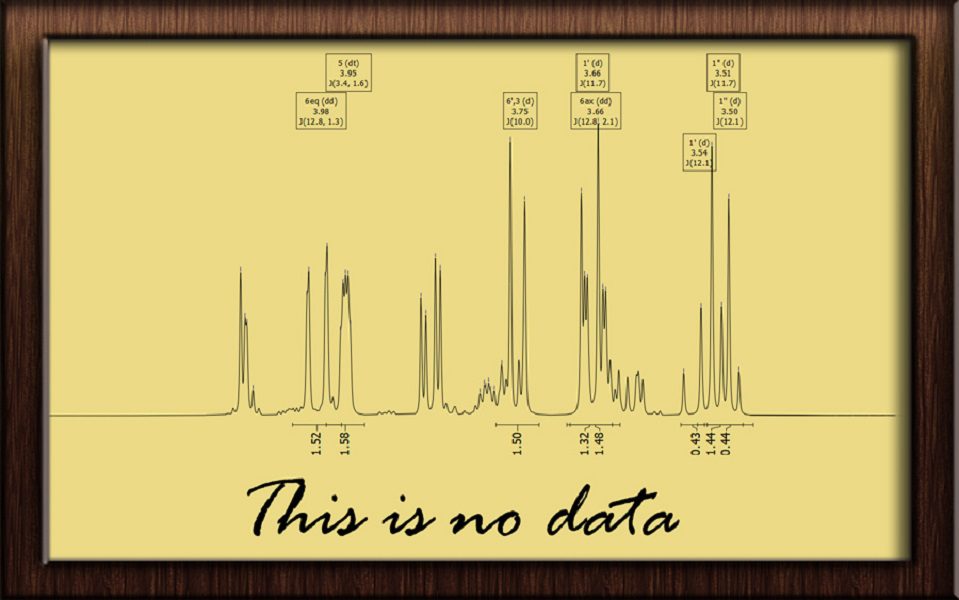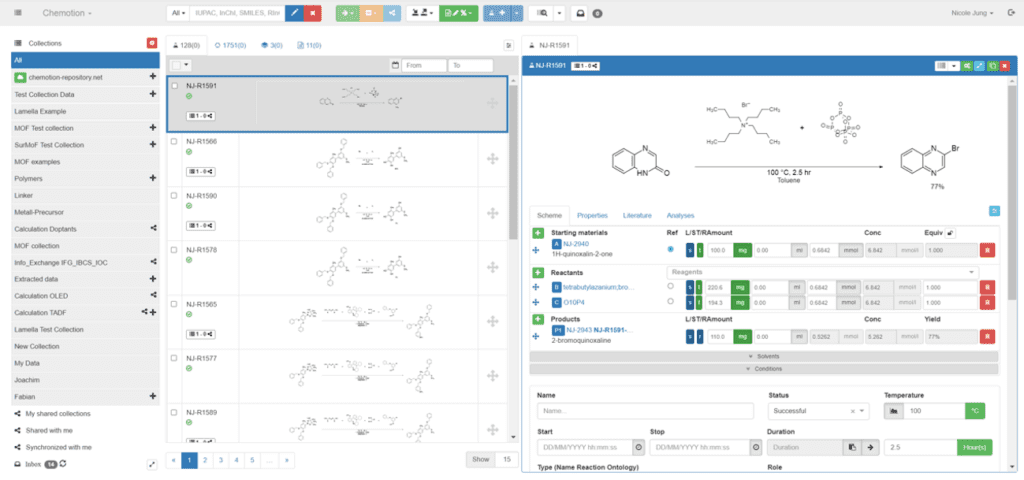The German National Research Data Infrastructure – Chemistry Division
Data is the currency of science. It makes it reproducible and gives it credibility. Currently, however, chemists often publish without consistently including the relevant data in their publications. Spectra as JPGs in Supporting Information PDFs are not data, they are representations of data, so you and, crucially machine learning tools can’t easily interact with them.
This is where NFDI4Chem comes in. NFDI4Chem is part of the German National Research Data Infrastructure (NFDI) and develops and maintains an infrastructure for chemical research data that can be freely used worldwide. We support scientists in collecting, storing, processing, analysing, publishing and re-using research data. Our goal is for all researchers to publish with FAIR data, i.e. findable, accessible, interoperable and reusable.

The infrastructure
Maintaining an infrastructure means that we provide an open source electronic lab notebook (Chemotion ELN) and a range of open access repositories, and that we collaborate with other organisations (e.g. IUPAC & the PSDI), e.g. on standards and ontologies.
As data in paper notebooks are neither FAIR nor machine-readable, it is necessary to move to electronic tools such as ELNs, store the data in appropriate repositories and comply with appropriate standards. There is a learning curve, but – contrary to popular belief, it saves a lot of time: ELNs support the design and execution of experiments, provide information from linked databases, e.g. structural formulae and other data on known chemicals, provide suitable metadata and support data standardisation and publication preparation. They minimise sources of error and avoid data loss, which in the worst case can cost months with an analogue approach.
Looking ahead, ELNs will play a crucial role in the increasing use of AI in chemistry. Machine learning requires accessible and well-structured data, and there are already AIs providing real-time assistance in ELNs. The use of real-time AI assistance in chemistry will only increase in the future but an AI can only assist you if you work in a language it understands (i.e. not in a paper lab notebook).

The support
As replacing pen and pencil with electronic tools is not easy, we offer a wide range of free workshops. From the basics of research data management to Chemotion ELN courses. We offer an extensive knowledge base with in-depth articles, tutorial videos on YouTube and regular online roundtable discussions. And we offer support at helpdesk@nfdi4chem.de, where everyone is invited to take advantage of our help. Find out more about us at www.nfdi4chem.de.


